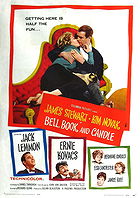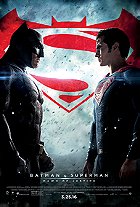There’s still some hope for the future of the DC cinematic universe, but they’re going to have to start listening to the fans and maybe remove much of the power from Zack Snyder. It’s not that Batman vs Superman: Dawn of Justice doesn’t have interesting story ideas or unique spins on the mythology, because it very much does, but it also seems enamored with a variation of these characters that is stuck in the toxic masculinity of the 1980s. It’s better than the 28% that Rotten Tomatoes’ collected reviews weighed it out with, but it’s still a resounding middling effort.
The thing is, Snyder is perfectly fine at bringing to life various comic book panels, and several of the scenes in Batman vs Superman are directly lifted from Frank Miller’s The Dark Knight Returns, but he’s not great at marrying these beautiful, highly stylized images into a coherent story. This same problem turned Man of Steel into an enjoyable but problematic and slightly hollow grind of slow-motion destruction, and this one does devolve into incoherent carnage in the final act as well.
Prior to that, it manages to tell a semi-coherent story that occasionally has moments of comic book brilliance and too many of stupidity. The first act’s retrofitting of Man of Steel’s mass destruction is a smart move, transforming an already veteran Batman into a darker presence, and causes a believable rift in which regular people view this super-powered demi-god with fear and skepticism. The foundation for a smarter story is there, and it does occasional lean into these beats, before doubling-down on some of the dumber choices.
A senator, played with dripping sarcasm by Holly Hunter, and a victim of Superman’s battle with Zod, Scoot McNairy, are nice touches, but they’re not given much screen time to really make an impact. McNairy’s character in particular is unique, as he’s slowly revealed as yet another pawn of Lex Luthor’s brilliant manipulations. While it’s nice to see a Lex Luthor on the big screen that’s written accurately as a genius businessman and regular-man who hates Superman for his god-like power, Jesse Eisenberg’s Zuckerberg-on-coke-bender performance is one of the film’s biggest blunders. Why is Luthor so hard for these films to get right? The various other franchises have had relatively little trouble transposing characters like Magneto, the Joker, Catwoman, and General Zod to charismatic, menacing life, but Luthor always goes weird.
Even worse is the way in which the title fight comes to a screeching halt. Lois Lane intervenes as Batman is ready to deliver the death-blow to Superman, both of them having been the manipulated pawns of Luthor’s rampant ego, when she mentions that he keeps saying “Martha” because it’s his mother’s name. That’s right, the title fight is brought to a close, and our heroes decide to team-up, because their mothers share the same first name. It’s the dumbest choice in a big blockbuster entertainment, which are typically filled with dumb story choices that we overlook because everything else is so damn entertaining.
Yet I didn’t hate Batman vs Superman. Not even a little bit, actually. I didn’t outright love it, but I found it entertaining enough. It does quite a few things pretty ingeniously. The cameos from various future members of the Justice League are smart choices, and props to DC for beating Marvel at having major characters of color and women already headlining their films in a few short years. This film also stuffs several prominent women in supporting roles, with Diane Lane and Amy Adams returning as Ma Kent and Lois Lane in parts that constantly propel the plot forward, Tao Okamoto as Mercy Graves (a bit of a waste of a cool character, even if they did go with her gal Friday New 52 persona), the aforementioned Hunter doing a lot with relatively little, and the real highlight of the film, Gal Gadot’s extended bit as Diana Prince/Wonder Woman.
A bit of a long tease for next year’s solo film, Gadot makes a strong impression with her limited screen time. When she finally appears in costume in the big boss battle against Doomsday, she’s the most heroic figure in the entire film. Her lone battle scenes features use of not only her wrist bands, but her sword, shield, and her golden lasso. In-between far too much aggressive machismo, Gadot’s Amazon princess is the stand-up-and-cheer heroine of the film with an iconic entrance that makes the stupid boys around her look childish in comparison.
Even better, for me anyway as a huge comic nerd, is the extended dream sequence which offers brief glimpses of Parademons, Darkseid, and the Flash, although his solo film and Justice League armor is less bulky. It’s pure comic book fan service, but proof enough that DC isn’t afraid of diving head first into the weirder and wilder fringes of their comic mythologies with their films. No slow rollout here like with Marvel, and this August’s Suicide Squad keeps up that appearance with the Enchantress in an obviously large role.
While I’ve admitted to really enjoying what Henry Cavill brings to the part of Superman, I was incredibly nervous about Ben Affleck’s hit-and-miss quality for Batman. Turns out, I didn’t need to worry as much as I did, he’s actually incredibly solid in the role. Christian Bale and Michael Keaton are still my favorite live action incarnations, but Affleck holds his own, and has me excited for what he’ll do with a solo Batman film. Just please, offer up something more than more grim-and-gritty-and- dark to the palette. I’m not ready to totally write off the DC cinematic universe just yet, but there’s some serious problems with the franchise that need to be address and re-calibrated.
 Login
Login
 Home
Home 95 Lists
95 Lists 1531 Reviews
1531 Reviews Collections
Collections
 0 comments,
0 comments, 







